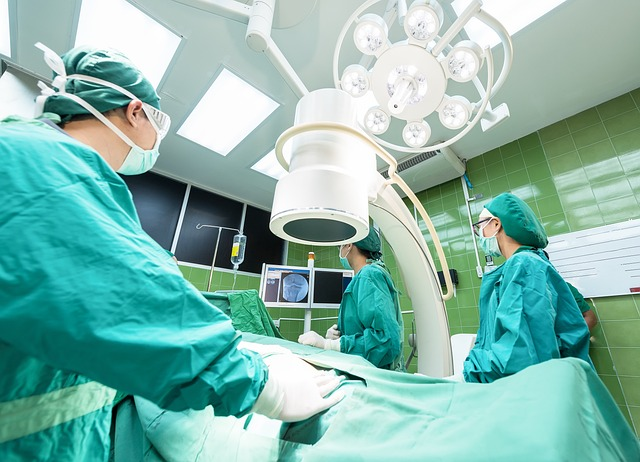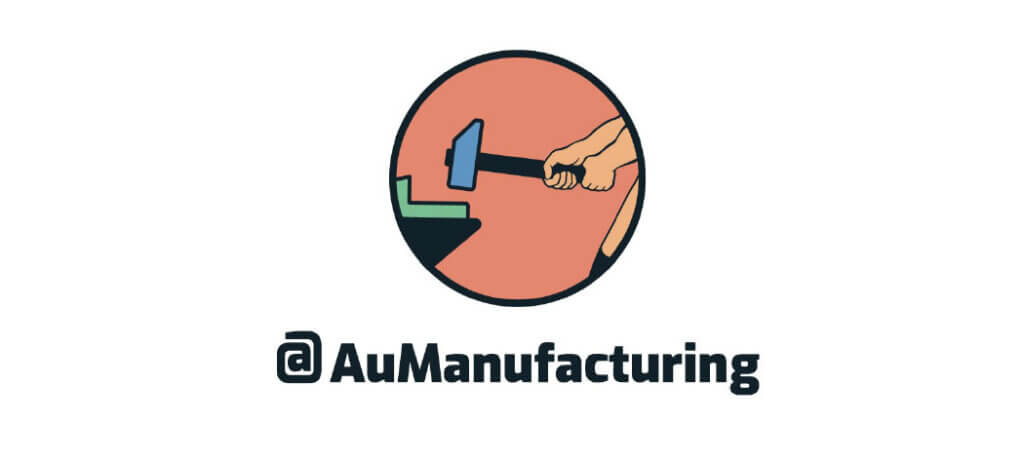Discover how the latest advancements in orthopaedic surgery are setting new standards for patient care. This article provides a focused look into how AI, robotic assistance, and regenerative treatments are revolutionizing surgery outcomes in orthopaedic surgeries. With these innovations, patients can anticipate less invasive procedures and faster recoveries, as we step into a new frontier of precision and personalization in orthopaedic care.
Key Takeaways
- AI-driven preoperative strategies and robotic assistance are enhancing the precision of orthopaedic surgeries, improving surgical outcomes, and tailoring procedures to individual patient needs using advanced imaging and artificial intelligence.
- Biologics and regenerative medicine, including the use of mesenchymal stem cells and advancements in tissue engineering, are transforming the treatment of musculoskeletal injuries by capitalizing on the body’s natural healing abilities.
- Smart implants that incorporate sensors for remote monitoring and the integration of advanced imaging with 3D printing are elevating standards in customized patient care and surgical success in orthopaedics.
AI-Driven Preoperative Strategies
The realm of AI-driven preoperative strategies is revolutionizing orthopaedic surgery, with artificial intelligence being far more than merely a buzzword. Harnessing the power of AI models, surgeons can now tailor surgical decisions to the individual needs of patients, enhancing the success of complex procedures such as total knee arthroplasty. For instance, AI-based 3D preoperative planning systems for total hip arthroplasty have surpassed traditional methods in surgical precision and in patient satisfaction and outcome improvement.
Machine learning, a subset of artificial intelligence, is refining the art of joint reconstruction and preoperative planning. It’s streamlining the process for joint replacement surgeries, transcending previous accuracy and efficiency benchmarks. Moreover, Computer-Assisted Preoperative Planning (CAPP) offers a comprehensive understanding of fracture characteristics, paving the way for optimized operative approaches and improved surgical results.
Picture a future where surgical guides are crafted not from generic templates, but from a deep, AI-driven understanding of individual patients. These strategies are not just hypothetical—they are being employed by top surgeons like Dr. Kevin Plancher, who leverage advanced imaging technology and artificial intelligence to ensure each surgical procedure is as minimally invasive and effective as possible.
The influence of AI in preoperative planning is not just theoretical—it’s palpable in the operating room where robots assist our orthopaedic surgeons. Robotic systems, informed by AI, are becoming the steadfast partners of orthopaedic surgeons, guiding instruments with unerring accuracy for each unique patient—a testament to the evolution and promise of orthopaedic interventions.
Minimally Invasive Robotic Assistance

Visualize the operating room of the future, with orthopaedic surgeons and their robotic counterparts working in unison to perform joint replacement surgery with unmatched precision. Robotic-assisted surgery is not a marvel of the distant future; it is here, enhancing precision in orthopaedic procedures and thereby revolutionizing patient care through the use of both augmented reality and virtual reality alone.
In hip and knee replacements, robotic systems are the unsung heroes, ensuring the accurate alignment of replacement parts, and thus preserving the patient’s comfort and gait. These critical factors contribute to the implant’s function and longevity, which are paramount for the patient’s quality of life post-surgery. However, the integration of such cutting-edge technologies is not without its challenges. The high cost of robotic systems, a significant learning curve for orthopaedic surgeons, and the need for ongoing maintenance are hurdles that the medical community is actively working to overcome.
The marvel of orthopaedic technology, robotic systems, incorporate:
- accelerometers
- gyroscopes
- pressure sensors
- advanced imaging technology
These tools aid surgeons in realizing their patients’ desired outcomes. It is a testament to the relentless pursuit of improving patient outcomes that these challenges are being addressed.
The narrative of robotic assistance in orthopaedic surgery is one of meticulous care and precision, where every incision and adjustment is calculated and executed with greater accuracy than ever before. In this high-stakes field, where the difference between success and failure can be measured in millimeters, the role of robotic systems cannot be overstated.
As the technology continues to develop, and as more orthopaedic surgeons become adept at using these tools, the landscape of orthopaedic care is being transformed. Imagine a future where every joint and broken bone reconstruction, every knee replacement, is supported by the precision of robotic assistance—a future that is rapidly becoming the present and will transform orthopaedic surgery.

Breakthroughs in Biologics and Regenerative Medicine
The burgeoning field of biologics and regenerative medicine harnesses the body’s cells to promote healing. At the core of this medical revolution are stem cells, particularly mesenchymal stem cells (MSCs), renowned for their remarkable self-renewal capacity and differentiation potential. These cells are being explored for their regenerative prowess in musculoskeletal injuries like:
- rotator cuff tears
- ligament and tendon injuries
- osteoarthritis
- cartilage defects
Therapies utilizing various stem cell sources are leading to improved patient outcomes.
The potential of regenerative medicine isn’t confined to stem cells alone. The exciting realm of 3D bioprinting is showing significant promise in bone regeneration and cartilage restoration, potentially transforming the treatment landscape for many musculoskeletal conditions and injuries. Moreover, the effectiveness of these stem cells can be amplified by modulating their microenvironments, such as controlling acidity and oxygen levels, which in turn boosts their regenerative capabilities.
New insights into the microenvironmental conditions have shed light on intervertebral disc regeneration. Specific stem cells have been identified that exhibit remarkable resilience to severe acidity, a boon for treating disc conditions. The horizon of regenerative medicine extends further with induced pluripotent stem cells and tissue-specific progenitor cells, which are garnering interest for their potential to regenerate tissues in a variety of musculoskeletal conditions.
Tissue engineering is another frontier in orthopaedics where cells, scaffolds, and signals converge to repair or regenerate tissues. For instance, the use of acellular scaffolds made from equine-derived type-I collagen and magnesium-enriched hydroxyapatite has been employed to treat fractures and osteochondral defects, yielding better outcomes and improved patient outcomes. Genetic modification and advanced biomaterials are also part of the ongoing research to regenerate damaged musculoskeletal tissues.
Orthopaedic diseases such as bone defects such as fracture nonunion, osteonecrosis, and osteochondral defects are now being addressed using tissue engineering strategies tailored to musculoskeletal pathologies. Mesenchymal stem cells implanted with morselized allograft in osteonecrosis treatment have achieved healthy trabecular bone-like outcomes in certain cases. Furthermore, the clinical use of engineered allogeneic chondrocytes expressing TGF-β1 has shown substantial improvements in patient clinical scores for musculoskeletal disorders.
The advancing field of 3D bioprinting holds promise for creating living tissues and organ analogs. However, challenges such as maintaining cell viability and functional tissue structure must be overcome to fully realize the potential of this technology.
Smart Implants and Remote Monitoring
The future of smart implants and remote remote patient monitoring, exemplifies the integration of advanced technology within medical devices, not only enhancing treatments but also empowering patients. Smart orthopaedic implants are equipped with sensors that monitor critical metrics such as pressure and temperature, offering real-time data to healthcare professionals and patients alike.
These innovative implants are used in a variety of orthopaedic surgeries, including total hip and full knee replacement, arthroplasty, and spine fusion. They play a pivotal role in tracking joint movement and forces, which is vital for an individualized approach to post-surgery treatment plans and patient engagement. The personalized data collected by these smart implants contribute to improved outcomes, steering the medical field toward the era of precision medicine.
The demand for smart medical implants is fueled by the rise in age-related diseases and advancements in sensor technology. Hospitals and clinics, as the primary end-users of metal implants, are supporting the integration of these new technologies, recognizing their potential to revolutionize orthopaedic surgery. However, ensuring the safety and reliability of these implants, navigating regulatory challenges, managing development and manufacturing costs, and protecting patient data from cybersecurity threats are all challenges that must be addressed.
The narrative of smart implants and remote monitoring in orthopaedic care is one of continuous innovation, where every implant is not just a device, but a source of valuable data that informs and improves patient care.
Advanced Imaging and 3D Printing Innovations
The synergy between advanced imaging and 3D printing innovations is evident in the creation of patient-specific implants and medical devices, which is raising the standards of surgical success and patient outcomes. 3D printing technology is driving a new epoch in orthopaedic surgery, allowing for the fabrication of personalized implants and devices that conform precisely to a patient’s anatomy.
Custom-fitted orthotics, prosthetics, and surgical instruments tailored to individual patient’s anatomy are now possible, thanks to various 3D printing methods. These innovations are offering improved outcomes for patients facing challenging pathologies. In tandem, advanced imaging technologies like CT and MRI have become indispensable for accurately visualizing anatomy, aiding in detailed surgical planning, and guiding image-based treatments.
Moreover, advancements in bioprinting techniques are leading to new anti-infective strategies for implants. Surfaces that repel biofilms and materials that deliver antibiotics are optimizing patient outcomes by preventing post-surgical infections. The interplay between imaging and 3D printing is revolutionizing orthopaedic surgery, yielding greater precision and deeper understanding in the creation of customized implants and smart implants.
Cutting Edge Techniques for Soft Tissue Management
The world of soft-tissue repair and management in orthopaedic surgery employs specialized surgical instruments and advanced techniques to minimize tissue damage and enhance surgical precision. Some of the specialized soft tissue instruments used in orthopaedic surgery include:
- Curettes
- Retractors
- Rongeurs
- Elevators
- Forceps
These instruments enable surgeons to manipulate tissues with precision while minimizing collateral damage. They are typically made from high-grade German surgical stainless steel, which provides the durability and sterility essential for effective soft tissue management.
Tungsten carbide-edged instruments offer enhanced cutting and gripping capabilities, enabling more refined handling of soft tissues and reducing trauma. Various retractors, like Weitlaner and Volkman, are crucial for maintaining clear surgical visibility and protecting the integrity of surrounding tissues. In the context of total knee arthroplasty, smart implant technology exemplified by VeraSense assists surgeons in achieving optimal soft-tissue balancing and implant positioning, thanks to the real-time data it provides.
Some essential tools for surgical procedures include:
- Tungsten carbide-edged instruments for enhanced cutting and gripping capabilities
- Retractors like Weitlaner and Volkman maintain clear surgical visibility and protect surrounding tissues
- Smart implant technology like VeraSense for achieving optimal soft-tissue balancing and implant positioning
These tools help surgeons perform procedures with greater precision and improve patient outcomes.
Orthoplastics and new microsurgical techniques are significantly improving outcomes in soft tissue management, enhancing the potential for limb salvage in severely injured extremities. Some key considerations for managing soft tissue injuries include:
- Individualizing the treatment plan based on each patient’s unique factors
- Taking into account general recommendations from clinical trials like the LEAP project
- Utilizing orthoplastics and microsurgical techniques to optimize outcomes
By considering these factors, healthcare professionals can improve the management of soft tissue injuries and increase the chances of full tissue healing and successful limb salvage.
New Horizons in Spinal Surgeries
Discover the new horizons of spinal surgeries, where treatment options and patient outcomes are being reshaped by minimally invasive techniques and advanced technologies. Minimally invasive spine surgeries (MISS) offer numerous advantages over conventional open spine surgery, including growth factors such as:
- Smaller incisions
- Reduced tissue damage
- Quicker patient recovery
- Shorter hospital stays
Technological advancements in MISS, such technological advances such as microscopic-assisted methods and the combination of endoscopy with microscopy, are broadening the scope of minimally invasive interventions. Surgeries like MIS-TLIF and OLIF/XLIF, which utilize smaller incisions and technology for procedures like pedicle screw fixation and lumbar interbody fusion, are gaining popularity due to their ability to preserve normal spinal architecture and minimize muscle and ligament injury.
Endoscopic spine surgery, which uses high-magnification cameras for clear visualization, has evolved into a universal method offering precise differentiation between normal and pathological structures. Robotics in spine surgery, such as the ROSA Robotic Surgical Assistant and the MAZOR X Stealth Edition Robotic Guidance System, exemplify the integration of real-time intraoperative data and image guidance, enhancing surgical precision. These advancements have improved patient outcomes by reducing surgical time, lessening pain, and promoting faster recovery.
The Impact of Digital Templating and Computer-Assisted Planning
The transformative impact of digital templating and computer-assisted planning on orthopaedic surgeries is worth noting. Digital templating represents an innovative approach that assists orthopaedic implant representatives in accurately selecting implant sizes pre-surgery, benefiting patients and improving collaboration between orthopaedic surgeons and reps.
Digital templating offers several benefits for orthopaedic care, including:
- Enhancing operating room utilization
- Reducing turnover times
- Lowering costs associated with inventory handling and sterilization
- Optimizing resource management and operational workflows
- Improving patient engagement and satisfaction
- Facilitating detailed discussions of preoperative plans
- Ensuring accurate implant fit
- Shortening recovery times
Contemporary digital templating systems feature:
- The ability to import studies
- System access from various locations
- Accurate measurements without calibration markers
- A constantly updated template library
These elements enhance the precision and reliability of orthopaedic surgical planning. As orthopaedic technology itself continues to evolve, digital templating and computer-assisted planning are proving to be indispensable tools in the orthopaedic surgeon’s arsenal.
Summary
The landscape of orthopaedic surgery is undergoing a seismic shift, thanks to the remarkable advancements in AI-driven preoperative strategies, minimally invasive robotic assistance, regenerative medicine breakthroughs, smart implant technology, and imaging and 3D printing innovations. These developments and emerging technologies are not only revolutionizing the way orthopaedic surgeries are performed but are also significantly enhancing patient outcomes.
The fusion of cutting-edge technology with surgical expertise, as exemplified by leaders like Dr. Kevin Plancher, is paving the way for a future of orthopaedic interventions where personalized care is the norm, recovery times and pain are reduced, and the precision of treatments is unparalleled. As these technologies become more accessible and their applications more widespread, the potential for transformative patient care in orthopaedics is limitless.
Embrace the latest advancements in orthopaedic surgery, and look forward to a future where the intricate dance between surgeon, technology, and the human body leads to outcomes that were once deemed impossible. The journey of orthopaedic surgery is one of constant evolution—a testament to the relentless pursuit of excellence in patient care. Contact Plancher Orthopaedics to learn more about our experience in orthopaedic surgery!
Frequently Asked Questions
How has technology changed in orthopaedic surgery?
Technology in orthopaedic surgery has reduced complications and surgical revisions by using digital templates for incisions, bone mapping, and joint replacements with synthetic components. These advancements have led to improved outcomes for orthopaedic surgery patients.
What is new in orthopaedics?
In orthopaedics, the Mazor X Stealth from Medtronic is a new robotic-assisted surgical platform that enhances precision during spinal surgeries. This technology helps improve the accuracy of pedicle screw placement for orthopaedic surgeons.
What is the future of orthopaedic surgery?
The future of orthopaedic surgery will be marked by rapidly advancing technology, including the expansion of robotic-assisted surgery and artificial intelligence, as well as an increase in the use of orthobiologics for sports medicine and orthopaedic surgeries. These advancements will likely result in improved patient outcomes and surgical techniques.
How does AI enhance preoperative orthopaedic planning?
AI enhances preoperative orthopaedic planning by predicting patient suitability for procedures and creating personalized surgical guides, ultimately improving accuracy and outcomes in surgeries such as total knee arthroplasty.
What are some of the challenges associated with robotic-assisted orthopaedic surgery?
Some challenges of robotic-assisted orthopaedic surgery are the high cost of technology, the learning curve for surgeons, and the requirement for ongoing maintenance. These factors can present obstacles in adopting this surgical approach.





 William D. Murrell, MD
William D. Murrell, MD Thomas B. Evely, DO
Thomas B. Evely, DO Clifford Voigt, MD
Clifford Voigt, MD Karthikeyan Chinnakkannu, MD
Karthikeyan Chinnakkannu, MD Max N. Seiter, MD
Max N. Seiter, MD Demetris Delos, MD
Demetris Delos, MD Lauren M. Fabian, MD
Lauren M. Fabian, MD